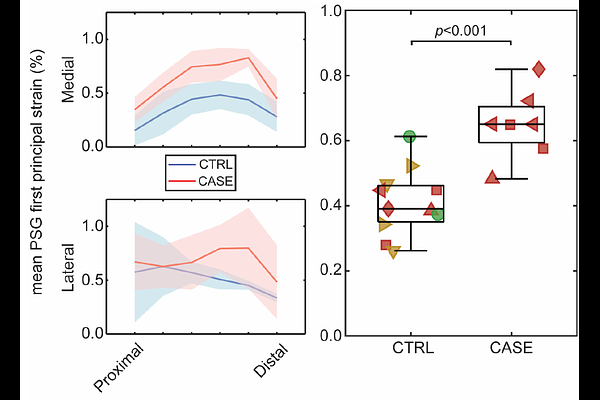Risk assessment for condylar stress fracture in elite racing Thoroughbreds using standing computed tomography-based virtual mechanical testing

Risk assessment for condylar stress fracture in elite racing Thoroughbreds using standing computed tomography-based virtual mechanical testing
Brown, N.; Irandoust, S.; Thom, E. J.; Whitton, R. C.; Henak, C.; Muir, P.
AbstractBackground: Condylar stress fracture of the third metacarpal bone is a common catastrophic musculoskeletal injury in Thoroughbred racehorses. Condylar stress fracture is associated with parasagittal groove (PSG) subchondral osteolysis. Standing computed tomography (sCT) imaging allows for sensitive identification of this fatigue-induced structural change, an early form of subchondral bone injury (SBI), but there is not yet an objective method for identifying racehorses at heightened risk of condylar stress fracture. Objectives: To estimate PSG first principal strain in elite Thoroughbred racehorses that have undergone subjective risk assessment using sCT fetlock screening. Study design: Retrospective clinical study. Methods: We used fetlock sCT images from 9 thoracic limbs from 7 Thoroughbred racehorses. A tuned, validated 3D finite element (FE) analysis approach was used as a virtual mechanical test to estimate PSG first principal strain in the distal third metacarpal bone (MC3) from these joints. Virtual mechanical testing results were compared with a subjective clinical risk assessment using an established screening approach by Racing Victoria. Results: MC3 condyles with PSG SBI consistently and significantly displayed increased levels of first principal strain throughout the PSG. We found focal strain concentrations associated with the anatomical location of SBI compared to condyles with no evidence of SBI in the PSG. Clinical diagnosis of SBI with focal osteolysis, FE-predicted strain elevation, and clinical risk assessment were concordant with recall and precision of 0.86. Main limitations: The sample size was small, and our virtual mechanical testing protocol does not account for whole-joint physiology. Conclusions: Risk assessment through screening with sCT is an established approach to injury prevention in racing Thoroughbreds. Concordance of a current clinical risk assessment approach by Racing Victoria with objective FE analysis of principal strain in sites of SBI in the present study suggests 3D FE analysis using a validated pipeline is an important new approach for routine assessment of risk of MC3 condylar stress fracture in Thoroughbred racehorses.